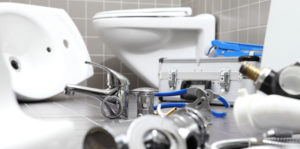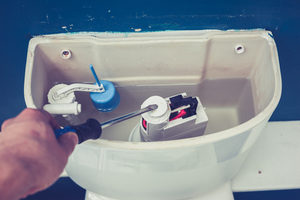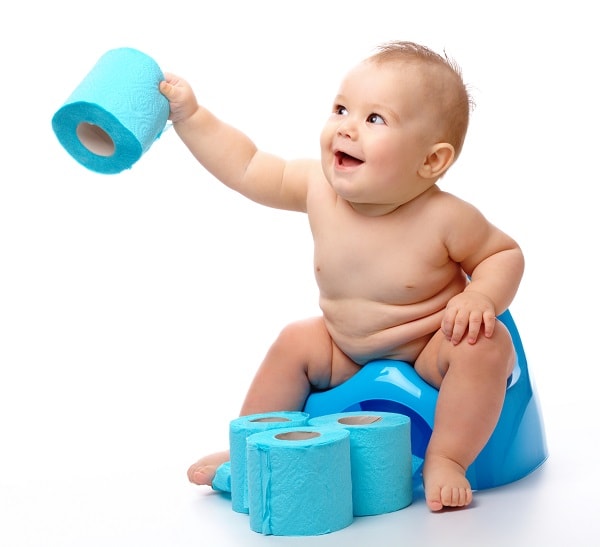Common Reasons Your Toilet Won’t Flush Properly
Everyone knows that when their toilet won’t flush, they have a problem. That’s not tough to figure out. Likewise with a completely clogged toilet. It’s obvious. Unfortunately, there are problems that are less obvious. Sometimes, for instance, your toilet just doesn’t work very well. Maybe it still flushes, but the flush is weak or too brief. Maybe you have to flush it multiple times to get it to work completely.
Whatever the problem, it’s not in your head. If your toilet doesn’t seem like it’s working properly, then it probably isn’t. Don’t wait for it to get any worse; act now.
How it creates a weak flush
When you flush your toilet, you’re actually letting water from the tank into the bowl. Releasing a lot of water into the bowl quickly generates the suction required to flush the toilet. When the tank doesn’t contain enough water, it doesn’t release as much water as it should when flushed. You’ll notice a weaker flush, or water may enter your toilet bowl without starting a flush at all.
How you can fix it
Most toilet manufacturers leave a mark inside the toilet tank to indicate how much water it should store. Find this mark inside the tank and make sure the water level rises to it after every flush. If you can’t find a manufacturer’s mark, make sure water rises to about inch beneath the tank’s overflow tube. If the water in your tank doesn’t rise to the mark, you have to adjust it.
How it creates a weak flush
The flapper is the rubber cup-shaped fixture located at the bottom of the toilet tank. It covers up a drain leading from the tank to the bowl. The lift chain attaches to the top of the flapper at one end and a long metal arm at the other. This metal arm attaches to the handle of the toilet. When you pull the handle, the metal arm rises, bringing the chain with it. The chain, in turn, lifts the flapper.

Why Does My Toilet Clog So Easily?
Toilet clogs are messy and embarrassing, but repeated toilet clogs are just plain frustrating. There are lots of different reasons why toilets can get clogged, and it’s one of the most common questions we get.
There’s Something Stuck in There
We’ve pulled a lot of strange things out of toilets over the years, most often toys. For some reason kids like to start their science careers by experimenting with the household plumbing. If water alone flushes just fine, but anything solid gets stuck, it’s likely that the issue is a foreign object.
You’re Using the Wrong Paper…Or Too Much
Toilet tissue is supposed to dissolve easily when it touches water, but not all brands dissolve properly. We’ve seen pricey “luxury” and cheap toilet paper brands alike refuse to fall apart properly. Some paper we’ve seen is almost as strong as newsprint…ouch!
Your Diet Needs More Fiber
While we’re plumbers, not doctors, it’s clear that some people with heavily meat-based diets can produce poo that is very solid and more likely to get stuck. Some medications can produce this effect as well. If the toilet doesn’t clog all the time, just when some people use it, this may be the cause.
There’s Not Enough Water in Your Tank
If there’s a problem with the toilet’s incoming water supply line, the tank may not be filling up fully. The result is that you don’t get the right amount of water coming into the bowl when you flush.

Reasons to Put a Urinal in Your Home
Imagine the testosterone-soaked joy of having a professional quality urinal in your home. Envision screaming “Valhalla!” while you pee standing up—not because you want to, but because you must.
Unfortunately, the primary obstacle to this essential right of manhood is usually the being least likely to use it—a wife or girlfriend. If any lady has a say in your home fixtures, she’s not likely to sign off on something her salty leavings will never grace
A urinal will end the eternal “Seat Up Wars.”
For many women, a man’s unwillingness to put a toilet seat down after relieving himself is a greater tragedy than the sinking of the Lusitania. But with the addition of a urinal, the toilets in your home will suddenly become seated-only environments.
A urinal will preserve the bathroom floor
Yes, we’re all well aware that guys can occasionally be terrible shots. (We’re talking pee, not guns, in case that wasn’t clear.) Whether we’re groggy from sleep or just not paying attention, sometimes we miss, and our pee ends up on the floor, on the toilet seat, and anywhere else that happens to be within range.
A urinal means that the toilet is now essentially hers
It’s not like you’ll stop using the toilet entirely. But now you’ll only be using it for pooping. For all intents and purposes, the toilet is hers. She can turn the sit-down commode into a personal craft project, if she wants. Encourage her to paint it, or add little curtains around it, or color coordinate it any damn way she likes.

How to Replace a Toilet Handle
Is your toilet flush handle broken, rusted, pocked, or just plain and old-fashioned looking? Maybe it’s always loose, no matter how many times you tighten that nut on the inside of the tank?
Open the Tank
Remove the tank lid and set it on a spread-out towel in an out-of-the-way spot (be careful — porcelain is brittle). Look for a model name or number printed inside the tank (as well as the brand name on the outside), and write that information down. It may come in handy when you buy a replacement handle.
Unhook the Lift Chain
You’ll see that the handle is attached to a long arm inside the tank, and that the arm is linked to a chain that lifts the flush valve. Note which hole the chain is hooked to (there are usually three or more holes on the arm) and then unhook the clasp that holds the chain to the arm.
Remove the Old Handle
Use a crescent wrench to remove the nut inside the tank that holds the handle in place. Be careful: For the vast majority of toilets, the nut has left-handed threads, which means they turn in the reverse direction of a normal nut. If you were to face the nut directly, you’d turn it clockwise to loosen it.
Purchase a Replacement
The replacement part you need is called a “toilet trip lever” and it includes the handle and swing arm. They retail for under $20, but models for high-end toilets may cost $50 to $100. Though some trip levers are labeled as universal replacements, there really is no such thing. There are differences between the length and angles of the arms, the placement on the tank (left or right, front or side), and the style and finish of the handle.

The Pros and Cons of Wall-Mounted Toilets
It’s the stuff of a bathroom designer’s dream: A sleek, space-saving toilet, absent that unsightly tank, which can be installed at precisely the right height for you. Plus, the nature of the design—a wall-mounted toilet doesn’t contact the floor—makes it a breeze to keep the area around it clean.
These elegant commodes hide the plumbing and working parts. The tank, made of lightweight plastic and styrofoam, lives behind the wall, cradled in a cast-iron or steel carrier that gets installed between two studs to provide support. The bowl floats above the floor, anchored through the drywall to the carrier.
If it all sounds a little exotic, that’s because these fixtures are far from standard. It’s easy to understand why: Installing a wall-hung toilet requires invasive and intensive reconstruction, and once it’s in place there’s no removing the lid of the tank to fiddle with a finicky flapper—the mechanicals are buried in the wall. It’s possible in some scenarios to install an access panel for repairs, but that’s a very custom solution.
Built to Code
With their compact size, wall-mounted toilets offer more flexibility when designing or updating a bathroom. “These toilets can meet building-code clearances where floor mounted toilets might not,” says
A Costly Alternative
Wall-mounted toilets come at a premium over standard toilets. Expect to pay several hundred dollars more for this type of fixture, not counting the cost of professional installation—this is not a do-it-yourself project, notes. “Already you’re paying more for this type of toilet, and depending on your circumstances, you might spend several hundred more to move the supply and waste lines or to reconfigure the studs,” he says. “It could easily be three times more expensive to switch from an existing floor to a wall-mounted toilet.”